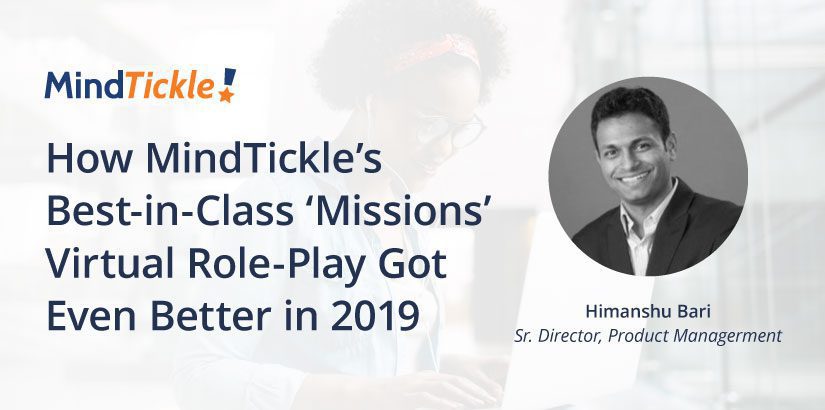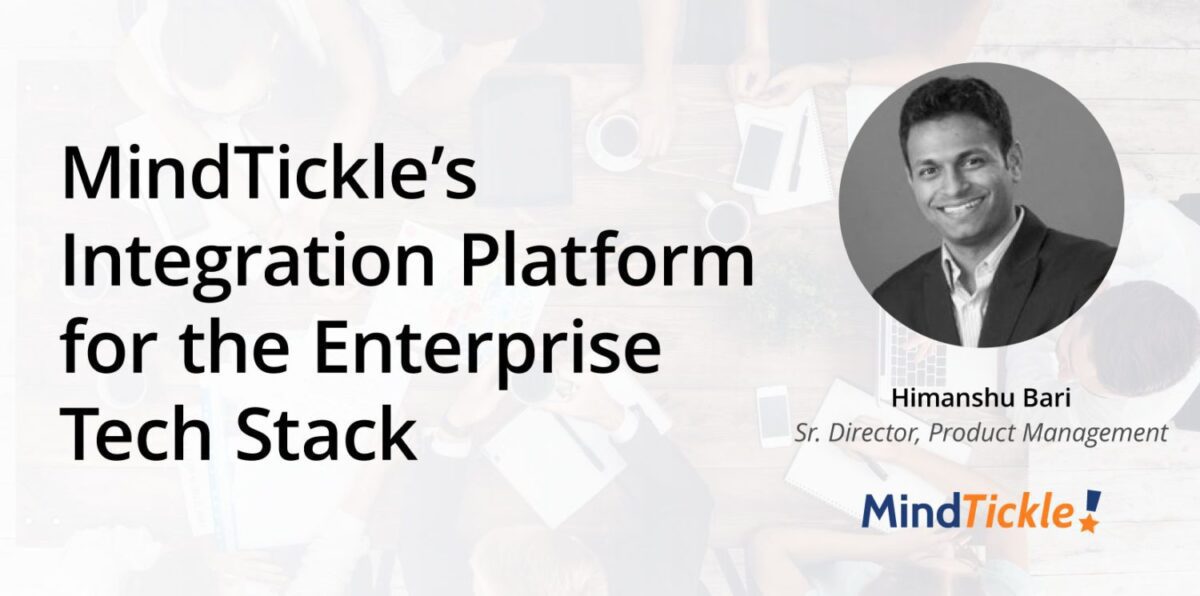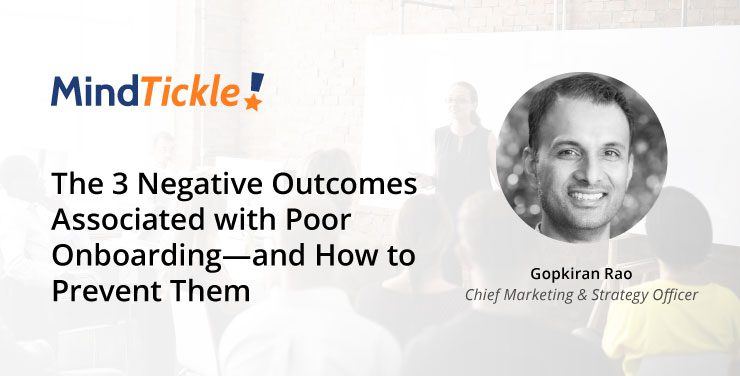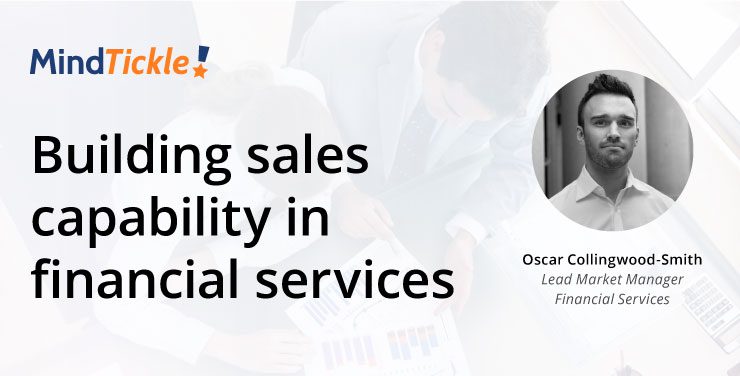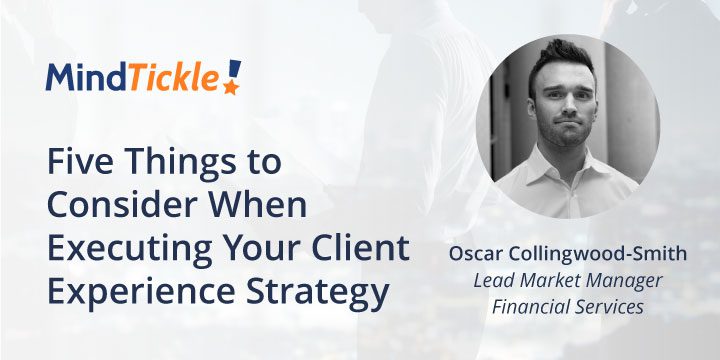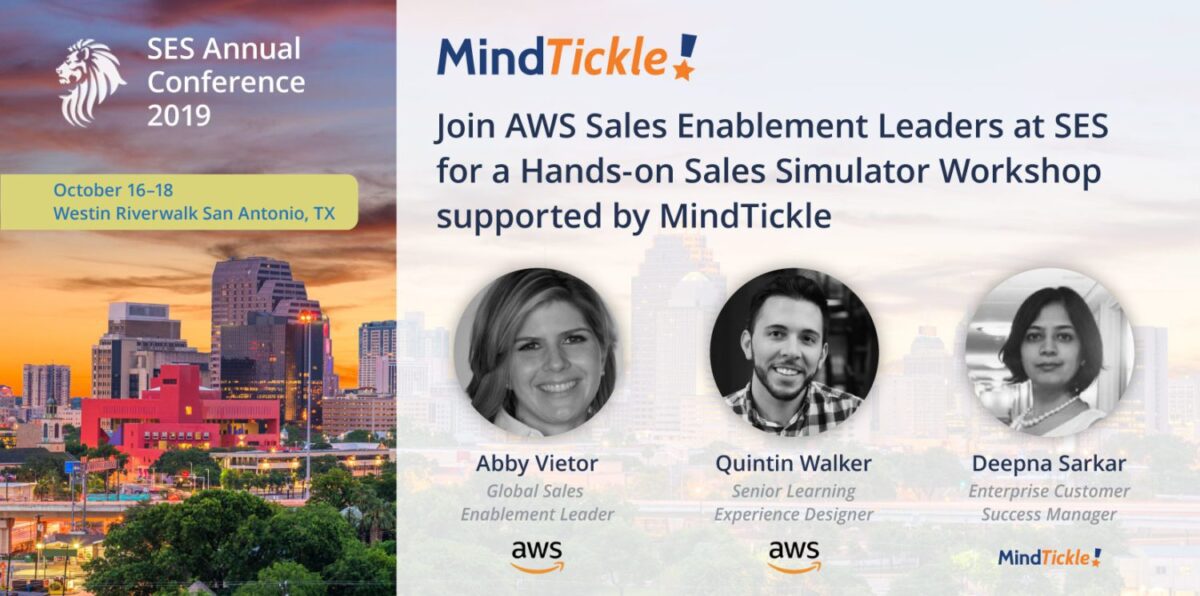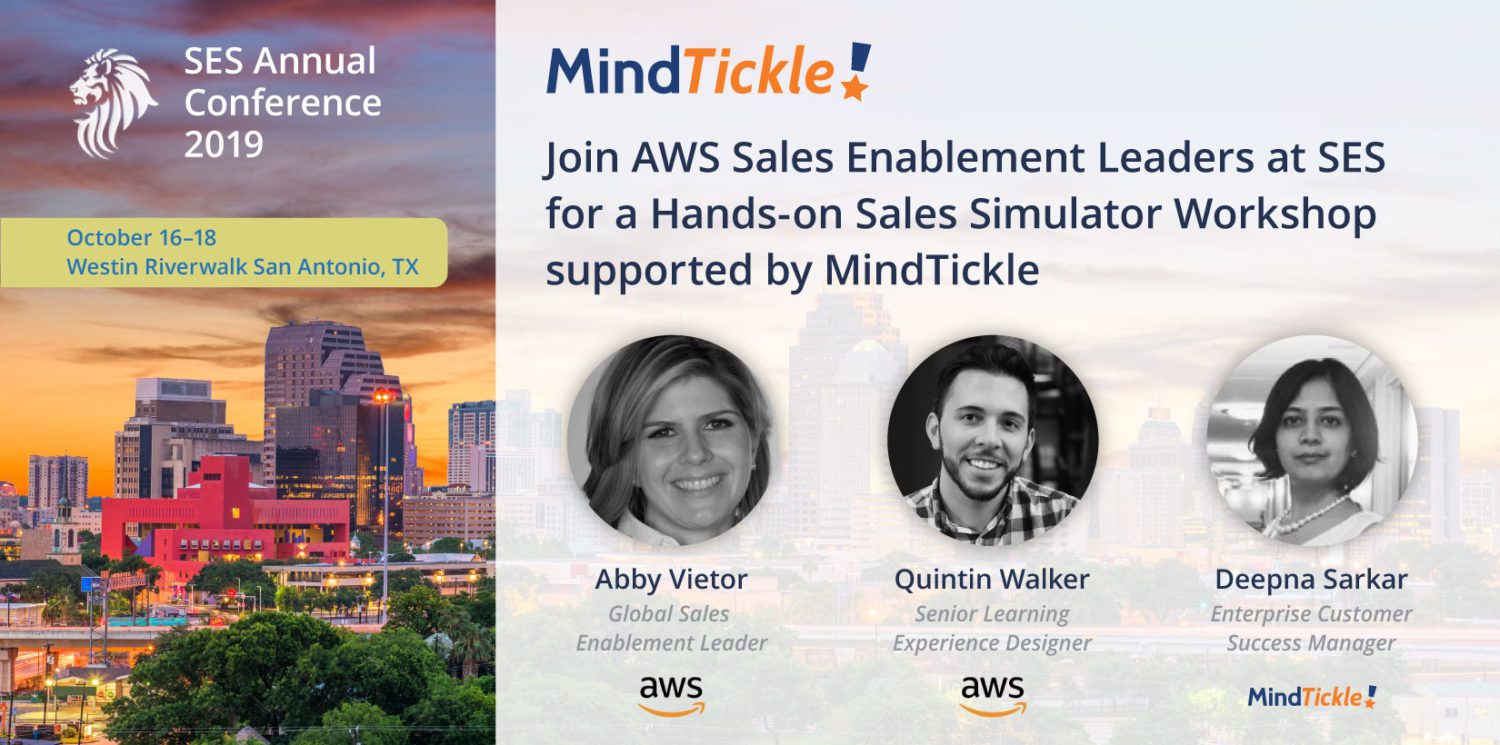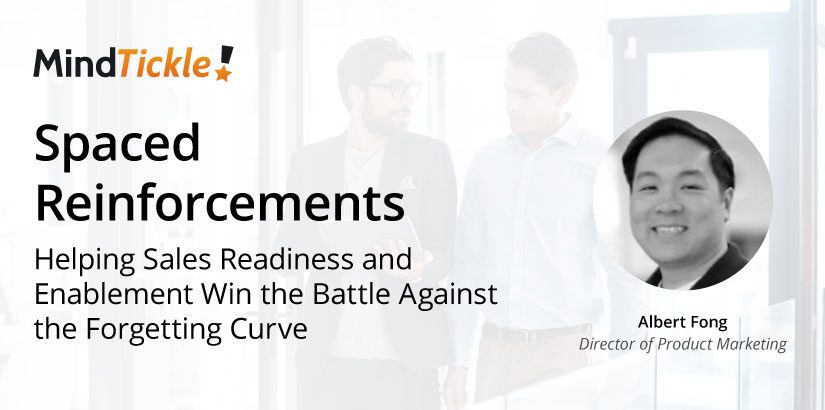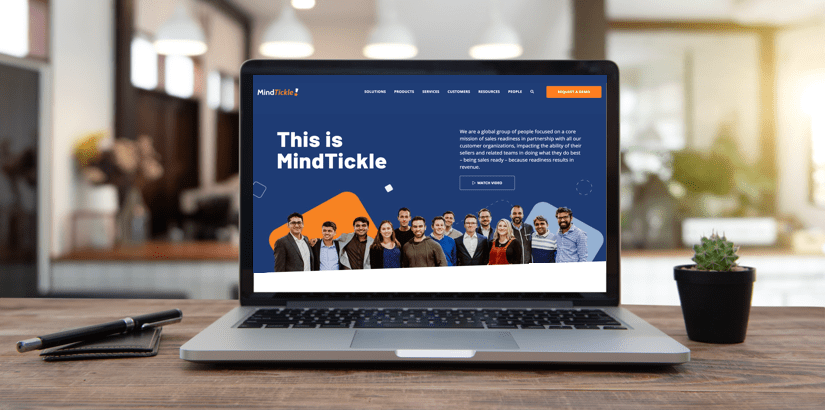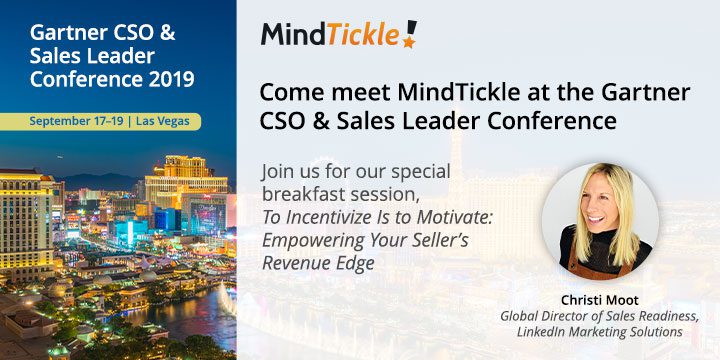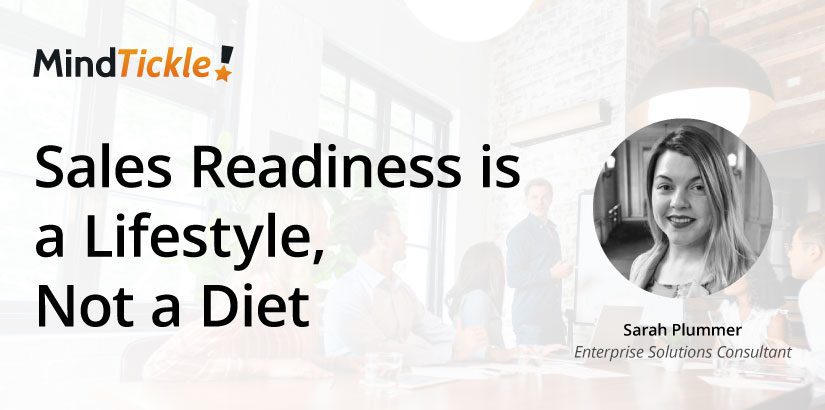How Mindtickle’s Best-in-Class ‘Missions’ Virtual Role-Play Got Even Better in 2019
In today’s digital age where everyone is glued to their phones, the traditional ‘Elevator Pitch’ rarely happens in the elevator. It is more likely that your sellers will never have the chance to be in that “elevator” or even the same conversation if they are not able to send a concise and effective LinkedIn invitation or message and master a consultative introductory conversation with the prospect. The most successful sellers are able to capitalize on customer interactions regardless of the medium – email, phone, in-person, web-conference.
As the industry-leading readiness platform, we enable this mastery through our ‘Missions’ capability. Missions allow sellers to practice voice-over-slideshow, video roleplay, email and task evaluation, and voice-over-screen share (product demo/walkthrough, etc.) in one unified platform. To date, our platform has seen over a quarter million Missions submitted by hundreds of customers across 10 industry verticals. In addition, Mindtickle customers are creating Missions to target use cases in all sales stages.
Here is a summary of the use cases we see:
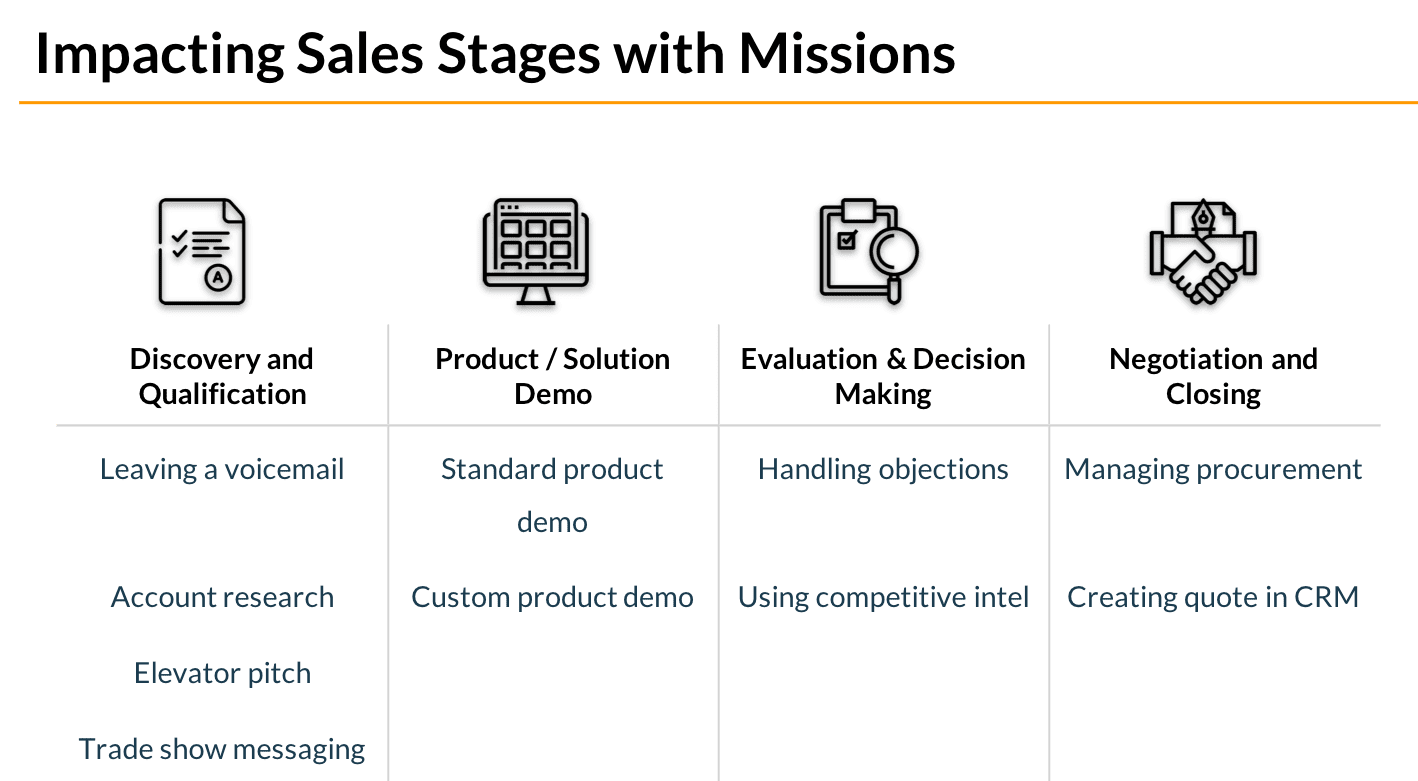

Meeting our customer needs at this scale and variety of use cases has only been possible through our continued commitment to keep the Missions capability in Mindtickle at the cutting edge. In 2019 we pushed the envelope around the use of innovative AI-driven capabilities. These often get all the attention, but along with the new AI capabilities, we also furthered our market differentiation and lead in the critical features that don’t usually make the headlines – configuration, management, and tracking of Missions. We even redesigned the entire Missions user interface (UI) for a fresh new and intuitive experience. This ensures that the comprehensiveness of the Missions features doesn’t come at the cost of usability. This has allowed Mindtickle Missions to truly stand out from all others in the space that also claim to have Missions or role-plays but don’t have the breadth and depth in the capabilities that are critical to the successful adoption at scale in the enterprise.
Instead of simply giving a laundry list of the key capabilities, I want to articulate how we have built the Missions in Mindtickle to address the key challenges faced by three key users: the Enablement admin, the Reviewer (e.g. their rep manager or coach), and Seller. All of which are involved in the configuration, launch, and adoption of the Missions.
Enablement Admins
The admins are the lynchpin the entire Missions workflow. Here are some of their key needs to ensure the successful adoption of Missions.
Target all forms of customer interactions:
Multiple types of Missions to help target all forms of customer interactions – text emails, presentation or phone conversations
Maintain consistency in definition and quality of Mission across all admins:
Reduce time and error in Mission creation and get better consistency across admins with a guided creation workflow with intelligent default configuration values to ensure that key settings are never missed or improperly configured
Match evaluation mechanism to the use case of Missions:
Evaluation criteria of ‘message certification’ Mission are very different from that of a ‘success story’ Mission. The criteria also vary based on the profile of the target sellers eg. Between BDRs and experienced account executives. A one size fits all approach just doesn’t work. Mindtickle Missions have extremely configurable evaluation criteria. Admins can pick between a rating scale, multiple-choice and text feedback. They can organize the evaluation criteria in sections and customize the weights for each parameter. Certification and re-certification options allow Missions to be used for compliance or partner certification related use cases.
Ensure unbiased and consistent responses across all reviewers:
If sellers are being compared by their performance across a set of Missions, we need to make sure their Missions that are being evaluated by different people are as objective as possible
- Reviewer guidance – This helps reduce reviewer error and bias and ensures good data quality when comparing sellers and reviewer performance
- Multiple reviewers – helps add multiple perspectives so you can quickly spot anomalies or at the very least help the seller get faster responses or encourage more per to peer collaboration
Drive accountability and adoption of Missions:
This usually takes a combined carrot and stick approach. Admins in Mindtickle have multiple options on both fronts at their disposal
- Very flexible notification criteria allow admins to pick specific trigger points (e.g. on invitation, close to the due date, or submission or due date for review, etc.). They can also ensure the notifications to both the sellers and reviewers are available over one or more preferred channels (eg. Slack notification, mobile notification or email, etc.) to avoid creating noise but ensure high open rates. All of our customers typically see at least a 15% bump in the submission/review rate around the moment a notification is sent.
- Admins can quickly create visibility around managers/reviewers who take the extra effort in providing the most constructive feedback. Mindtickle generates this ‘review quality report’ by analyzing the text data from comments left by reviewers in Missions
- A global reviewer report helps admins get visibility across time to know who are their most proactive and diligent managers vs. the troublemakers. They can create the Mission completion and score reports and share it across the management chain where each manager’s data is automatically scoped by the platform to show their direct reports.
- Some customers push the boundaries even further by integrating the certification data from Missions into their HRMS systems like Workday
Mission Reviewers
The experience of Mission reviewers in Mindtickle is optimized with AI assistance to ensure they can provide quick, consistent, and high-quality feedback. Reviewers are first shown Missions that are due or overdue to prioritize attention. Once inside the Mission, the system first shows reviewers how the submission performs on length, speech pace, and use of filler words. As the reviewers look through the evaluation criteria, they are shown inline guidance on rating parameter meaning and the difference between each value of the rating scale. They also get to see the machine analysis of the submission around the keywords that were important. The text transcript helps them quickly browse through the Mission so they can focus on the parts of the Mission where the machine shows weak coverage of the keywords. Once reviewers pinpoint the issues, they can quickly add contextual feedback using the in-line comment capability.
Managers are able to also leverage the reports bookmarked for them by the admins to quickly get a sense of how their team stacks around the key evaluation parameters of the Missions so they can understand competency gaps.
For more information about how Mindtickle helps equip front-line managers with a data-driven coaching platform, see our solutions page on Coaching and Skill Certification for Managers.
Sellers
For sellers to derive maximum value from the Missions, the experience for the seller needs to be very closely tailored to the scenario and feedback on their submission needs to be quick, actionable, unbiased, and contextual. With the comprehensive configuration options leveraged by admins, sellers in Mindtickle see Missions that are very closely customized and matched to the intent of the exercise.
AI-enabled instant response from the machine gives seller input on the use of filler words, length, and talking pace of the role-play. This allows sellers to ‘re-attempt’ before submitting for review to their manager/reviewer. This machine-assisted practice leads to higher long term proficiency.
For areas of improvement, sellers are able to see the remediation assigned by the reviewer tailored to the evaluation criteria that need improvements. Sellers also benefit from the use of the in-video comments capability leveraged by the reviewers. By looking at seller interaction data, we see that the sellers often revisit the in-context comments multiple times — underscoring their importance.
Looking into 2020 we are excited to now leverage this Missions platform and wealth of data we have collected to add further AI-driven personalization and automation of the entire Mission workflow.
Click here for more information about Missions and full site of Sales Readiness applications!

